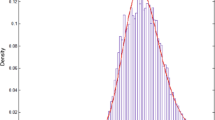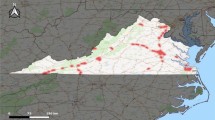Abstract
Regarding the role of time in human life, the driving time can be a tangible criterion to represent the quality of flow in every traffic facility such as freeway interchanges. There are a lot of appreciable attempts which focused on determining travel time in long-length paths in the networks. But, there are not enough considerable studies on predicting the driving time in short-length paths such as the parts of an interchange. Besides, when the study area has to be changed, or when the purpose is to design a nonexistent interchange, predicting the driving time in diverse parts of an interchange cannot be carried out by direct measurement, and when there is information shortage on some hardly achievable traffic-based characteristics of interchanges, predicting the driving time by common procedures will be so hard or even impossible. Using simulation software usually needs considerable time and budget, too. In this paper, focus was on studying the short-length fragments of freeway interchanges to predict driving time by investigating ten real-world interchanges and more than 13,600 different simulated parts of interchanges. An artificial neural network (ANN)-based model and a particle swarm optimization (PSO)-based model were developed, and therefore, predicting driving time was possible just based on basic simple traffic and geometrical properties of the interchange. The results of testing, validating, and statistical analysis depicted a proper and precise development of the models. Although the PSO-based models have higher RMSE values than ANN-based models, the models were reliable enough to use for predicting the driving time in four parts of interchanges.







Similar content being viewed by others
Abbreviations
- \( v_{i}^{k} \) :
-
Vector of movement of particle i in iteration k
- rand:
-
A random digit between zero and one
- \( v_{i}^{k + 1} \) :
-
Modified vector of movement of particle i
- \( x_{i}^{k} \) :
-
Current location of particle i in iteration k
- gbest:
-
Best result of community
- pbest:
-
Best result of particle i
- c i :
-
Weight coefficient of each component
- w i :
-
Weight coefficient of velocity vector of particle i
- k :
-
Contraction factor
- iter:
-
Number of iterations
- itermax :
-
Maximum number of all iterations
- DTi, PSO :
-
Driving time calculated by PSO-based predictor model in iteration i
- t1–tn :
-
Traffic variables
- g1–gn :
-
Geometric variables
- ai and bi :
-
Constant parameters and coefficients of PSO basic equation
- DTi, DB :
-
Driving time in database
- DTW :
-
Average driving time in weaving segment
- DTM :
-
Average driving time in merge area
- DTD :
-
Average driving time in diverge area
- DTR :
-
Average driving time of interchange ramp
- L W :
-
Length of weaving area
- N w :
-
Number of lanes in weaving area
- N R-OFF :
-
Number of off-ramp lanes
- N R-ON :
-
Number of on-ramp lanes
- V FW :
-
Freeway volume
- V R-ON :
-
On-ramp volume
- S FW :
-
Freeway free flow speed
- S R-OFF :
-
Speed of off-ramp
- S R-ON :
-
Speed of on-ramp
- L ACC :
-
Length of acceleration lane
- L DEC :
-
Length of deceleration lane
- N R :
-
Number of lanes in ramp
- L R :
-
Length of ramp
- S LONG :
-
Average slope of ramp
- V R :
-
Ramp flow rate
- R R :
-
Radius of ramp
- µ m :
-
Mean of models population
- µ s :
-
Mean of field study population
- n m :
-
Number of samples in models population
- σ m :
-
Standard deviation of models population
- n s :
-
Number of samples in field study population
- σ s :
-
Standard deviation of field study population
References
Anderson J, Bell M (1997) Travel time estimation in urban road networks. Paper presented at the intelligent transportation system, ITSC’97
Angeline P (1998) Evolutionary optimization versus Particle Swarm Optimization: philosophy and performance differences. Paper presented at the evolutionary programming VII
Beale MH, Hagan MT, Demuth HB (2012) Neural network toolbox™ user’s guide. Paper presented at the R2012a, The MathWorks, Inc., 3 Apple Hill Drive Natick, MA 01760-2098. www.mathworks.com
Chan KY, Dillon TS, Singh J, Chang E (2012) Neural-network-based models for short-term traffic flow forecasting using a hybrid exponential smoothing and Levenberg–Marquardt algorithm. IEEE Trans Intell Transp Syst 13(2):644–654
Clark SD, Dougherty MS, Kirby HR (1993) The use of neural networks and time series models for short term traffic forecasting: a comparative study. Paper presented at the transportation planning methods. Proceedings of seminar d held at the PTRC European transport, highways and planning 21st summer annual meeting, UMIST, vol P363
Haykin S, Lippmann R (1994) Neural networks, a comprehensive foundation. Int J Neural Syst 5(4):363–364
Huisken G, van Berkum EC (2003) A comparative analysis of short-range travel time prediction methods. Paper presented at the transportation research board annual meeting, CD-Rom
Jamshidnejad A, De Schutter B (2015) Estimation of the generalised average traffic speed based on microscopic measurements. Transp A Transp Sci 11(6):525–546
Kennedy J (1997) The particle swarm: social adaptation of knowledge. Paper presented at the evolutionary computation. IEEE international conference on evolutionary computation, 1997
Kennedy J (2011) Particle Swarm Optimization. Encyclopedia of machine learning. Springer, Berlin, pp 760–766
Kennedy J, Eberhart RC (1995) Particle Swarm Optimization. Paper presented at the IEEE International Conference on Neural Networks, Piscataway
Kewalramani MA, Gupta R (2006) Concrete compressive strength prediction using ultrasonic pulse velocity through Artificial Neural Networks. Autom Constr 15(3):374–379
Kumar K, Parida M, Katiyar V (2013) Short term traffic flow prediction for a non urban highway using Artificial Neural Network. Proc Soc Behav Sci 104:755–764
Lippmann R (1987) An introduction to computing with neural nets. IEEE ASSP Mag 4(2):4–22
Looney CG (1996) Advances in feedforward neural networks: demystifying knowledge acquiring black boxes. IEEE Trans Knowl Data Eng 8(2):211–226
Manual HC (2010) HCM2010. Transportation Research Board, National Research Council, Washington, DC
McCord NM, Illingworth W (1990) A practical guide to neural nets. Addison-Wesley, Reading
Palacharla PV, Nelson PC (1999) Application of fuzzy logic and neural networks for dynamic travel time estimation. Int Trans Oper Res 6(1):145–160
Robinson S, Polak J (2005) Modeling urban link travel time with inductive loop detector data by using the k-NN method. Transp Res Rec J Transp Res Board 1935:47–56
Sheela KG, Deepa SN (2013) Review on methods to fix number of hidden neurons in neural networks. In: Mathematical Problems in Engineering
Shi Y, Eberhart R (1998) Parameter selection in Particle Swarm Optimization. Paper presented at the Evolutionary programming VII
Smith BL, Demetsky MJ (1994) Short-term traffic flow prediction: neural network approach. Transp Res Rec 1453:98–104
Spiegelman C, Park ES, Rilett LR (2010) Transportation statistics and microsimulation. Taylor & Francis, Abingdon
Swingler K (1996) Applying neural networks: a practical guide. Morgan Kaufmann, Burlinton
Van Hinsbergen C, Hegyi A, Van Lint J, Van Zuylen H (2011) Bayesian neural networks for the prediction of stochastic travel times in urban networks. IET Intel Transp Syst 5(4):259–265
Zhang H (2000) Recursive prediction of traffic conditions with neural network models. J Transp Eng 126(6):472–481
Zhao B, Guo C, Cao Y (2005) A multiagent-based Particle Swarm Optimization approach for optimal reactive power dispatch. IEEE Trans Power Syst 20(2):1070–1078
Author information
Authors and Affiliations
Corresponding author
Rights and permissions
About this article
Cite this article
Behbahani, H., Hosseini, S.M., Samerei, S.A. et al. Driving Time Prediction at Freeway Interchanges Using Artificial Neural Network and Particle Swarm Optimization. Iran J Sci Technol Trans Civ Eng 44, 975–989 (2020). https://doi.org/10.1007/s40996-019-00289-5
Received:
Accepted:
Published:
Issue Date:
DOI: https://doi.org/10.1007/s40996-019-00289-5




